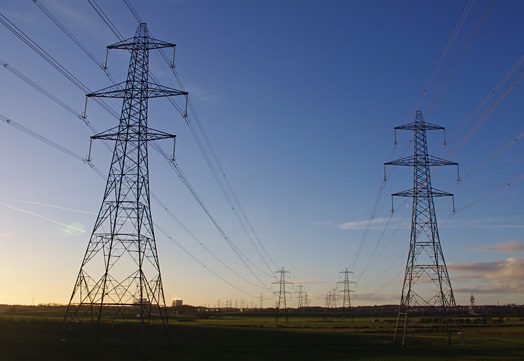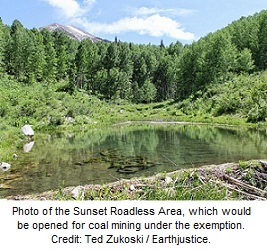By Marne Sussman
Recently passed legislation in New York State authorizes municipalities to create a PACE, or property assessed clean energy, program using federal grant assistance or federal credit support. In a PACE program a municipality sets up a special clean energy finance district capable of issuing low-interest bonds. Homeowners opt into these districts and can use the bond money for energy audits, renewable energy feasibility studies, the installation of renewable energy systems, and cost-effective and permanent energy efficiency improvements. The loans are repaid through a 15-20 year annual assessment on property taxes, which spreads the cost of improvements over many years and overcomes the barrier of initial upfront costs. The assessment is typically less than the energy savings generated, delivering immediate cost savings, and is attached to the property as a lien, staying with the property when it is sold.
The following steps are intended to guide New York municipalities in developing and implementing a PACE program. Establishing a PACE program should take 6 to 12 months depending on the resources of the municipality.
1. Build a PACE team and identify key staff and advisors
Municipalities should first create a team charged with developing and launching the PACE program.[1] The municipality should decide whether the capacity exists to manage the program in house or whether it is necessary to engage financial or administrative partners. Partnerships can range from a heavily involved partner that handles all of the processing and bond purchasing to the targeted use of outside expertise to assist the municipality with specific issues.[2]
The team will be responsible for the management, oversight, and coordination of the PACE program, including marketing, processing and approving applications, and collecting appropriate documents and recording tax liens. These roles may be filled by one person or several depending on the size of the program while some roles may be subcontracted to partners. For example, Berkeley, CA uses in-house staff for general program management but contracts out specific activities to Renewable Funding, a third party that helps municipalities run PACE programs.[3]
2. Design the program to meet specified goals with input from stakeholders
The PACE program should incorporate the municipality’s greenhouse gas reduction targets or economic and workforce development goals, tying the program with larger municipal goals. The municipality must decide whether they want to provide hands-on support and project guidance to homeowners, as Babylon, NY and Palm Desert, CA do, or whether they prefer to be hands-off and merely oversee the program.[4] In designing the program, the municipality should ask three key questions in determining which projects are eligible for loans.
What are the requirements for participating installers and contractors? The municipality should consider what kind of licensing and permitting requirements installers and contractors participating in the PACE program must meet. In New York home performance contractors must be trained according to Building Performance Institute standards for energy efficiency financing programs.[5] To qualify for a PACE loan under the New York legislation, energy audits or renewable energy feasibility studies must be performed by a contractor certified to New York State Energy Research and Development Authority (NYSERDA) standards or to standards set by a local government that are at least as stringent as NYSERDA standards.[6]
What specific home improvements are eligible for the loan? The municipality may choose to include any combination of energy audits, renewable energy feasibility studies, renewable energy systems, or energy efficiency improvements in their PACE program. The municipality may want to prioritize projects by requiring that more cost-effective energy efficiency improvements are conducted first before homeowners are allowed to use the PACE money to install more expensive renewable energy systems. In New York, loans may not be issued for energy efficiency improvements unless they have been determined appropriate by an energy audit or for renewable energy systems unless they have undergone a feasibility study. Energy efficiency improvements must also meet cost-effectiveness criteria established by NYSERDA and loans may not exceed 10% of the value of the real property upon which the improvements take place.[7]
What is the approval and quality assurance process? The municipality should carefully designate who will approve the projects for funding, how they will decide which projects qualify, and what kind of site inspection, quality inspection, or performance testing will be required of the project after it is installed.
Finally, municipalities should design a database where program staff can keep track of the number and types of projects, and projected energy savings that result from the program. If possible, municipalities should ask participants to sign a utility bill information release form as Berkeley, CA and Boulder County, CO do, so staff can track the actual energy savings from the project.[8]
3. Secure financing
Securing funding for an energy financing district may be the biggest hurdle for a municipality. Under the New York State enabling legislation, municipalities may fund their program using federal grant assistance or federal credit support mechanisms including direct loans, loan guarantees, and debt instruments.[9] One possible source of federal funds are Energy Efficiency and Conservation Block Grants (EECBG), a portion of which can be used to support the creation of Energy Financing Districts.[10]
Many PACE advocates are urging New York to expand the funding mechanisms for PACE programs so that municipalities can issues their own bonds and have more flexible means to secure financing for their programs. Securing federal financing may take a long time and there is only limited money available for this particular purpose. In other states with PACE programs such as California and Colorado, major lenders are now being attracted to PACE programs as backers for bonds. Using major lenders as backers for municipal bonds would provide a good alternative for municipalities in New York that cannot secure federal funding or support.
4. Adopt the PACE program and formally create the energy financing district
The PACE adoption process is specific to each municipality but will likely require multiple actions by the City Council or municipal governing body including various approvals. Each municipality will need to adopt an ordinance in the city code creating the energy financing district for the purpose of the installation of energy efficiency improvements or renewable energy systems.[11] This financing district may encompass the entire municipality as it does in Berkeley, CA.[12] The municipality may also need to get other approval from the City Council or municipal governing body to adopt the PACE program.
5. Launch the PACE program
The municipality should conduct marketing and outreach campaigns focusing on both the energy and financial benefits of the program. Homeowners should be advised of the potential costs and savings if they install energy efficiency measures or renewable energy improvements as part of the program. The municipality should strive to launch the program with as much detailed information as is possible regarding the cost of financing for the program and how much funding will be available. After the program is launched, the municipality will begin accepting applications and funding projects.[13]
Municipalities in New York have a great opportunity to be in the first wave of cities across the country instituting PACE programs. Municipalities interested in energy efficiency and cost savings should implement a PACE program to reduce energy usage and encourage energy efficiency. For more detailed information on adopting a PACE program see this link.
[1] Renewable Funding LLC, “How to Implement, Renewable Funding,” available at https://www.renewfund.com/pace/for-governments/how-to-implement.
[2] https://pacenow.org/documents/FullerKunkelKammen-MunicipalEnergyFinancing2009.pdf
[3] Renewable Funding LLC, https://www.renewfund.com.
[4] Renewable Funding LLC, “How to Implement, Renewable Funding,” available at https://www.renewfund.com/pace/for-governments/how-to-implement.
[5] https://pacenow.org/documents/FullerKunkelKammen-MunicipalEnergyFinancing2009.pdf.
[6] https://www.dsireusa.org/incentives/incentive.cfm?Incentive_Code=NY68F&re=1&ee=1.
[7] Id.
[8] https://pacenow.org/documents/FullerKunkelKammen-MunicipalEnergyFinancing2009.pdf.
[9] https://www.dsireusa.org/incentives/incentive.cfm?Incentive_Code=NY68F&re=1&ee=1.
[10] https://pacenow.org/documents/FullerKunkelKammen-MunicipalEnergyFinancing2009.pdf
[11] Renewable Funding LLC, “How to Implement, Renewable Funding,” available at https://www.renewfund.com/pace/for-governments/how-to-implement.
[12] Id.
[13] https://pacenow.org/documents/FullerKunkelKammen-MunicipalEnergyFinancing2009.pdf, Renewable Funding LLC, “How to Implement, Renewable Funding,” available at https://www.renewfund.com/pace/for-governments/how-to-implement.




